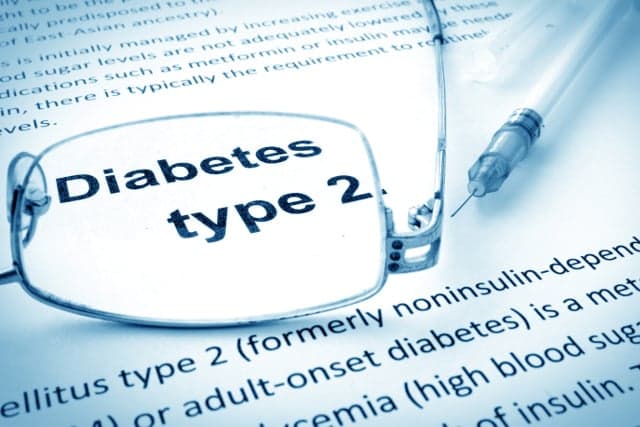Diabetes should actually be separated into FIVE types, Swedish researchers discover

Researchers in Lund say they have made a discovery that should be a "paradigm shift" in the diagnosis of diabetes, showing that the classification of the disorder should be updated to include five different types.
The ANDIS study of newly diagnosed diabetics in southern Sweden included 13,720 patients between the ages of 18 and 97. Using different combinations of six variables, the researchers were able to distinguish five separate clusters, unlike today's classification which views diabetes as having two main forms (type 1 and type 2).
"It has long been known that type 2 diabetes patients are a very heterogeneous group, defined primarily by the fact that they don't have the other diabetes form. What we have done is to separate them into four subgroups which are more homogeneous and that we can see have different risks of developing diabetes complications, which we believe need different treatment," Emma Ahlqvist, associate professor at the Lund University Diabetes Centre and lead author of the study, told The Local.
"The four type-two groups are completely new, while the fifth group corresponds to what we call type 1 diabetes and LADA (latent autoimmune diabetes in adults)."
READ ALSO: Why Sweden's role in global health is so important
Examples of how the forms differ include people in the third cluster – which is most resistant to insulin – having a much higher risk of developing diabetic kidney disease than those in clusters four and five. Those in cluster two meanwhile, who are insulin deficient, have the highest risk of retinopathy – disease of the retina caused by diabetes which damages the blood vessels at the back of the eye, impairing vision.
It is hoped that the new findings could one day help better tailor early treatments for patients, which are currently insufficient according to the researchers. Those in group three could benefit the most, due to the frequency of incorrect treatment at present.
The analysis was repeated in three further studies in Finland and Sweden, and there are plans for additional studies in China and India.
"Hopefully the new classification will lead to patients at a high risk of complications being identified and given the right and intensified treatment from diagnosis," Ahlqvist concluded.
Around 425 million people around the world have diabetes, with the number expected to grow to 629 million in 2045, according to the International Diabetes Federation. It is an incurable disease caused by the complete or partial lack of insulin.
READ ALSO: Snus as likely to cause type 2 diabetes as smoking, Swedes warned
Comments
See Also
The ANDIS study of newly diagnosed diabetics in southern Sweden included 13,720 patients between the ages of 18 and 97. Using different combinations of six variables, the researchers were able to distinguish five separate clusters, unlike today's classification which views diabetes as having two main forms (type 1 and type 2).
"It has long been known that type 2 diabetes patients are a very heterogeneous group, defined primarily by the fact that they don't have the other diabetes form. What we have done is to separate them into four subgroups which are more homogeneous and that we can see have different risks of developing diabetes complications, which we believe need different treatment," Emma Ahlqvist, associate professor at the Lund University Diabetes Centre and lead author of the study, told The Local.
"The four type-two groups are completely new, while the fifth group corresponds to what we call type 1 diabetes and LADA (latent autoimmune diabetes in adults)."
READ ALSO: Why Sweden's role in global health is so important
Examples of how the forms differ include people in the third cluster – which is most resistant to insulin – having a much higher risk of developing diabetic kidney disease than those in clusters four and five. Those in cluster two meanwhile, who are insulin deficient, have the highest risk of retinopathy – disease of the retina caused by diabetes which damages the blood vessels at the back of the eye, impairing vision.
It is hoped that the new findings could one day help better tailor early treatments for patients, which are currently insufficient according to the researchers. Those in group three could benefit the most, due to the frequency of incorrect treatment at present.
The analysis was repeated in three further studies in Finland and Sweden, and there are plans for additional studies in China and India.
"Hopefully the new classification will lead to patients at a high risk of complications being identified and given the right and intensified treatment from diagnosis," Ahlqvist concluded.
Around 425 million people around the world have diabetes, with the number expected to grow to 629 million in 2045, according to the International Diabetes Federation. It is an incurable disease caused by the complete or partial lack of insulin.
READ ALSO: Snus as likely to cause type 2 diabetes as smoking, Swedes warned
Join the conversation in our comments section below. Share your own views and experience and if you have a question or suggestion for our journalists then email us at [email protected].
Please keep comments civil, constructive and on topic – and make sure to read our terms of use before getting involved.
Please log in here to leave a comment.